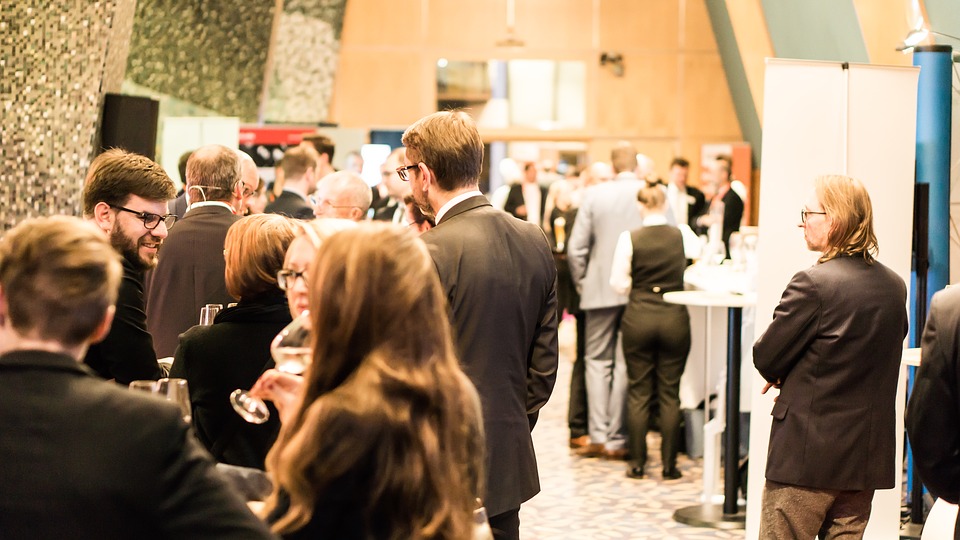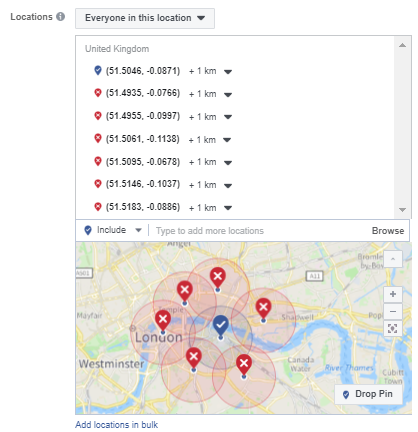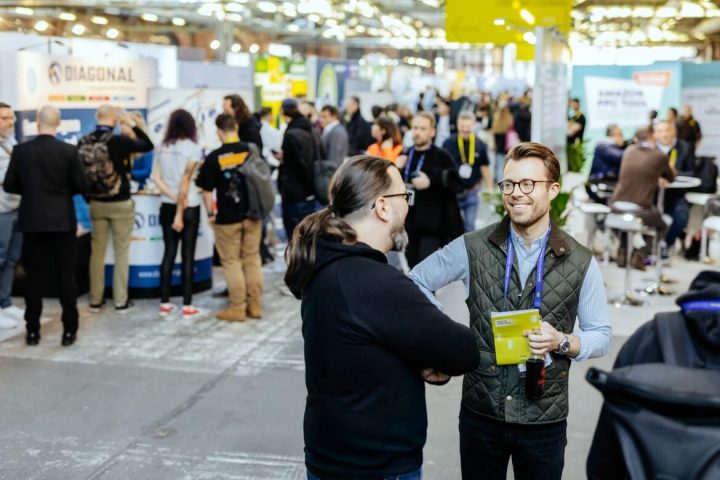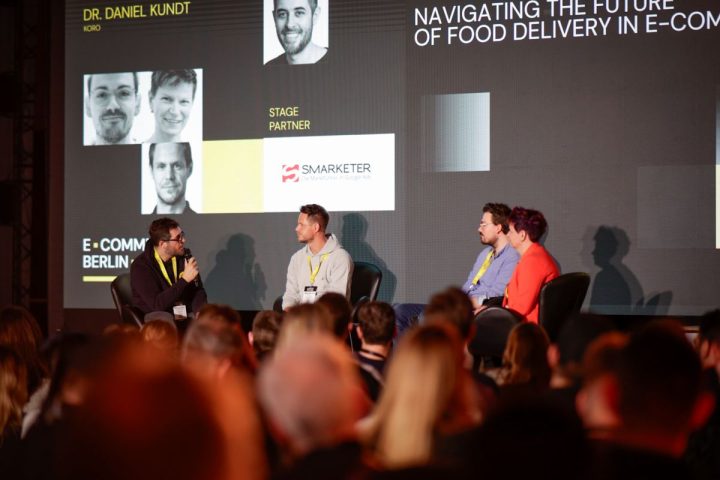Fairs like a pro – vol. 1: how to promote your booth on social media?
Written by
Kinga EdwardsPublished on

Conferences, fairs, stands, booths, presentations, exhibiting opportunities. You feel you have it all, however, you still know there are a lot of ways of how to make the most of it. If you need a guide of how to drive more traffic to your fair booth using techniques on social media, you’re in the right place, as below we’ll share some great practices. A good event promotion strategy won’t hurt.

Start promotion before fairs
Internally, you may get prepared to take part in fairs for months. You need to design and print promotional materials in advance, order some gadgets if you want to use them as lures to your booth, also arrange some training for your team who will be present at fairs. It’s totally understandable – you need to get fully ready. Why wouldn’t you share your preparation process on social media? Show a few sneak peeks, but don’t reveal too many secrets for two reasons. Firstly, your competitors don’t sleep. Secondly, your audience wouldn’t like to be covered by spam, for sure. Make them intrigued enough not only to come to fairs but more importantly to your booth.
Informing your audience or business partners too late may result in lower attendance around your booth, as they should plan on commuting or taking days off to get familiar with your offer for fairs. If you let them know only a few days before, or your message won’t be clear and transparent as for benefits they will get, only very few people may visit your booth.
For many, sending a few e-mails about fairs seems to be sufficient. It’s more about how will you construct sales pitch examples and put them into emails.
However, preparing this kind of newsletter may not be enough, especially now where mailboxes of many are clogged by far too many messages. Therefore, you need to be sure that you made it all clear on your social media channels as well. Facebook, Instagram, LinkedIn and Twitter should be your first choices, however, you may want to extend the list. Involve those who will personally take part in fairs to share some info as well, you can even encourage them to use Calendly or Calendesk to schedule appointments during the event.

Social media plan
Although you can’t get every pitch prepared in advance, there are quite a few things you may have ready earlier and they can come in handy afterwards. For example, social media posts highlighting your presence at fairs.
You shouldn’t limit yourself to just one type of posts. While you can think that photos work the best, you can try with short videos (try some free tools like Splice app, Lumen5 or Recast.Studio), carousels or link posts to make your marketing efforts more diverse.
Thank you all for joining us today! ✨
— E-commerce Berlin Expo | 17-18 Feb 2026 (@ecommerceberlin) February 20, 2019
We hope you enjoyed #ecommerceberlinexpo2019 and got a lot of inspiration, tips, tricks and tactics. Let us know your thoughts! ⚡️#ebe19 #ecommberlin #stationberlin #EcommExpo #ecommerceberlin pic.twitter.com/bb1Tne3N5P
To plan posts ahead in time, you can use some native features of social media or use helpful social media scheduler tools that cover all social media platforms, such as Kontentino (if you need to cover all types of LinkedIn posts, this tool is your friend) or Hootsuite.
At first, you may think that it is not needed at all, however, you’ll see that you’ll have no time for your social media during the event itself. While your competitors will be thinking of a set of captions during the event, you can chill and spend time with your potential customers. Of course, it does not mean that you shouldn’t use social media at the event! Be up-to-date, but use planning to share some interesting content.
Lack of ideas of what to share? Look at our list below.
- quotes and image quotes from the last edition of a particular event
- photos from the last edition, after receiving a prior approval
- press releases about the current edition of the event (or summaries of the last one)
- sneak-peeks as for your booth.
If you don’t have much of your own content, you can use tools like Rocketlink.io to send your audience to external content, but include them in your custom audiences thanks to retargeting pixels.
Can you forget about social media during the event? Absolutely not. Keep an eye on what is going on by monitoring mentions (using social media monitoring tools like Brand24 or Social Mention) and react in real-time (using content moderation tools). Fairs and conferences are those events where time matters the most if you react too late you can miss the boat. Twitter is a medium that is extraordinary active during many events, with TweetDeck you can stay up-to-date with the latest Tweets in the areas of your interest. This will also give you quite a list of pieces of content or photos you can retweet also after the event.
If you feel like it, and you have necessary tools & manpower to maintain it (and time during the event!), you can consider making some live videos directly from the event. However, organizers usually livestream events or parts of them anyway.

Think out-of-the-box
Well, even the best booth may not be popular among visitors, if it is not promoted online – especially if it is located out of the main event area. Take care of activities around your stand to increase social media reach and online mentions about your brand. Below, you’ll find a list of suggested things to do if you want to promote your booth, but we’ll come back to it in the second episode of our Fair series.
- photo frames – print an Instagram-related photo frame and encourage your followers to come to your booth, say hi and take a photo in your frame. You can ask them for sharing it on social media, with a relevant caption, description or set of hashtags, in exchange of gadgets or discounts.
- shows at your booth – invite some experts for a short interview, set up a Q&A or demo session and of course streamline it on social media
- coffee machine or small drinks stall – at fairs it’s likely for visitors to get thirsty or a bit hungry – if you attract them with some nibbles or drinks, of course after prior approval of the organizer, your booth can get fairly popular. Obviously, you need to be aware that some of them can be just random people looking for freebies, but those visitors can be turned into your clients or can have a good first impression with your brand.
Paid promotion
One of the common mistakes is to think that social media promotion needs to cost a little fortune, while a few bucks can actually deliver some results: drive more traffic, attract new followers and encourage some people to visit your booth even if they haven’t planned it. Divide your social media paid promotion into a few parts:
- pre-event – posts with sneak-peeks of you getting prepared for the event
- during the event – use smart FB campaign to target those who are in the area of the event! In the “Locations” section, simply drop the first pin where the event takes place. The next pins you drop should overlap the edges of the first area, so you’re effectively targeting only a very close area to the event, increasing chances on being noticed.

- after the event – you can publish a summary of the event (we’ll cover more of it in our next article) and promote it on social media.
Checklist
- prepare graphic designs in different sizes for each and every platform you’re using. An updated (as of April 2019) cheat sheet for social media you can find here.
- re-new tool subscriptions and download apps that can be really helpful for your social media profiles during the event. For example, Splice for iOS can help you create videos in no time, using only your phone. This works great for example if you want to put together a few photos or quotes.
- securely stored access to all profiles. There is nothing worse than some hassle during the event caused by a forgotten Twitter password (another golden tip – it really helps to have a few emergency power banks on you!)
- prepare photo frames to use on social media – on Facebook, you can add such a frame to your existing profile photo and, therefore, increase the reach of your presence at fairs
- download all materials, videos and graphics. It’s not unlikely to face some Internet downtime during the event or just network congestion.
- check all of the official hashtags of the event as well as handles of speakers, organizers or business partners. Prepare a list of hashtags in advance, it will save you a lot of time!
- be responsive – work on a few messages’ templates as well as social media crisis procedures in case someone starts the fire. The charm of social media is all about its unpredictability!
Would you add anything to our guide? We’re awaiting your comments and wishing you luck with your social media performance during events! In the next article of this series, we’ll reveal how to use content marketing for skyrocketing your presence at any event. Stay tuned!


